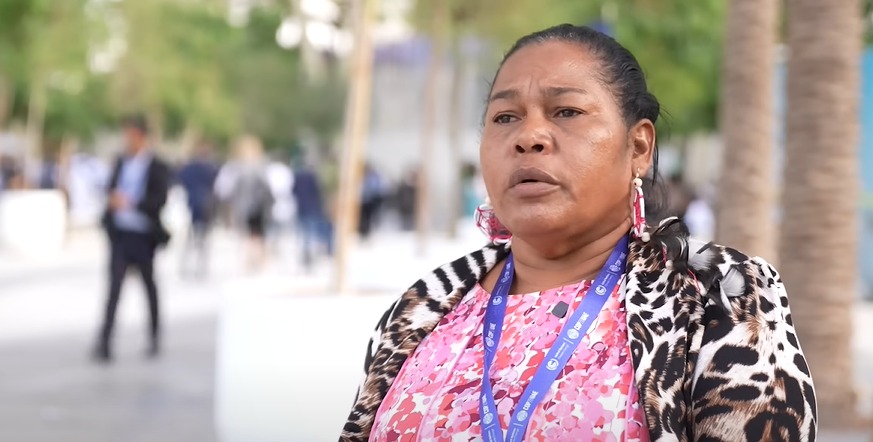
Opinion: Carbon credits are benefitting Guyana
By Melena Pollard, Toshao of Rivers’ View
If you boarded a boat in Bartica and crossed the Essequibo River, after only five minutes you would arrive in Rivers’ View—my home in Guyana. With a sandy coastline and dense, tropical forest, our community is highly dependent on the natural world. People use it for everything—shelter, clothing, medicine, and food. It is central to our daily lives.
Even though a boat is a necessity, Rivers’ View is one of Guyana’s more accessible villages. Visiting some places is impossible without a helicopter. Yet, however remote, most villages have one thing in common—an abundance of forests. With 87 percent of our country covered by tropical forests, we are one of the most densely forested countries in the world. Our forests are home to more than 1,200 animal species, including jaguars and river otters, and a further 6,000 plant species.
In keeping with trends observed the world over, our most pristine, biodiverse forests tend to be managed by Indigenous Peoples and local communities—people who have lived with the land for generations—who know how to use it wisely, never over extracting or causing degradation. Yet something is shifting. Even remote forests are no longer beyond the reach of the economic forces that lead to deforestation.

In Guyana, our forests store 19.5 billion tons of carbon. However, without protection and conservation, these same forests could quickly become a source of carbon emissions and push humanity closer to irreversible tipping points for climate and nature. That’s why Guyana decided to engage with the carbon market to conserve its forests. Via this mechanism, the country generates carbon credits from active measures to protect its forests, and can then sell these credits to companies, predominantly in the Global North.
With an annual deforestation rate of less than 0.1 percent, we have done an impressive job protecting our forest. As a result, our country was issued 33.47 million carbon credits corresponding to the volume of carbon emissions we reduced and prevented from entering the atmosphere between 2016 and 2020. Each village was invited to participate in the forest protection program and my community in Rivers’ View was the first to agree.
Now, every village receives carbon finance payments from the sale of carbon credits, making standing trees more valuable. While the government of Guyana invests 85 percent of the revenue from the sale of the credits in renewable energy, land titling for Indigenous villages, and climate change adaptation, 15 percent is directly available for people in Indigenous villages like Rivers’ View. I explain to other villagers that when they keep forests standing, they are providing a service to all of humanity. I say that because of their work, they are providing clean air for people to breathe and for that they should be paid. I think villagers could receive more, but these funds are still incredibly beneficial.
To receive carbon finance, each village must prepare either a one-year or a 10-year spending proposal and submit a Village Sustainability Plan that has been approved by a community wide vote. The idea is that money is used for projects that can generate funds for the community rather than cover a one-off purchase, although villages are not limited in what they can select. To develop the plans, Toshaos like me set up community meetings where people pitch projects of local importance.
In Rivers’ View, we used finance to repair a wharf that is used daily by our children to get to school. With an eye to the future, we also built a benab, a restaurant for tourists, and developed an initiative whereby people can sell chicken feed to farmers to earn additional income. With our next payment, we are hoping to design care packages for disabled people in the village. Each one of these ideas stemmed from community meetings.
From the regenerated wharf to the chicken feed initiative, I can see the positive impacts of carbon finance. So, when I hear people oppose carbon markets in the Global North, I wish I could invite them to Rivers’ View. I would like to show these critics the importance of forests, for both the health of our community and of planet earth. If only people could see how we spend carbon revenue in Rivers’ View, then I imagine their perceptions of carbon markets might change.
Guyana is a relatively small country, but due to how we have been managing our forest resource, we can provide a much-needed carbon sink service to the rest of the world. If there are other countries with standing forests who want to look to us as an example, then I encourage them to learn conservation by doing conservation—there is no time to delay action on deforestation. I call on business leaders to remember that when they purchase carbon credits, they can be investing in places like Rivers’ View, while helping secure a livable future for humanity. (Republished from Newsweek)




